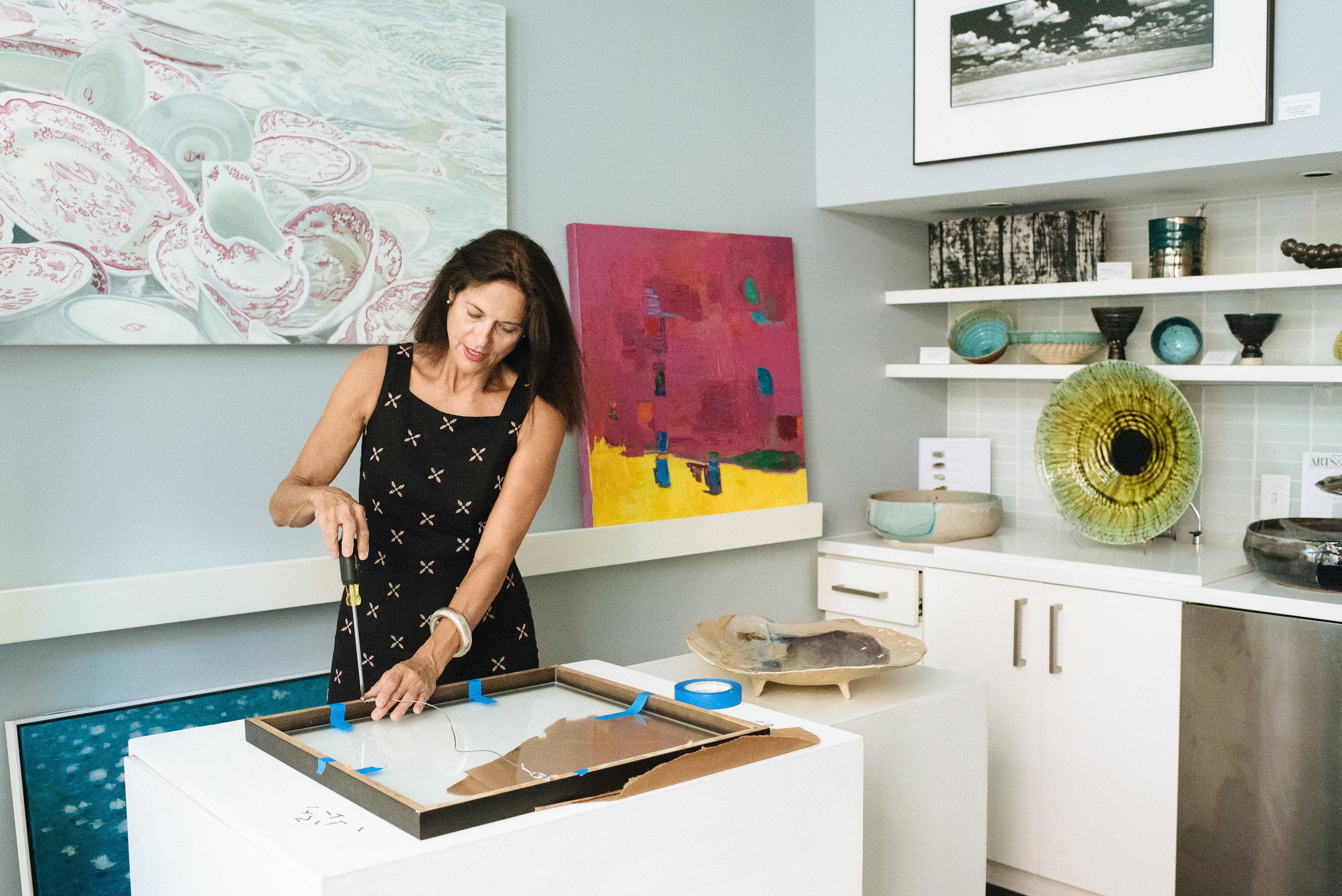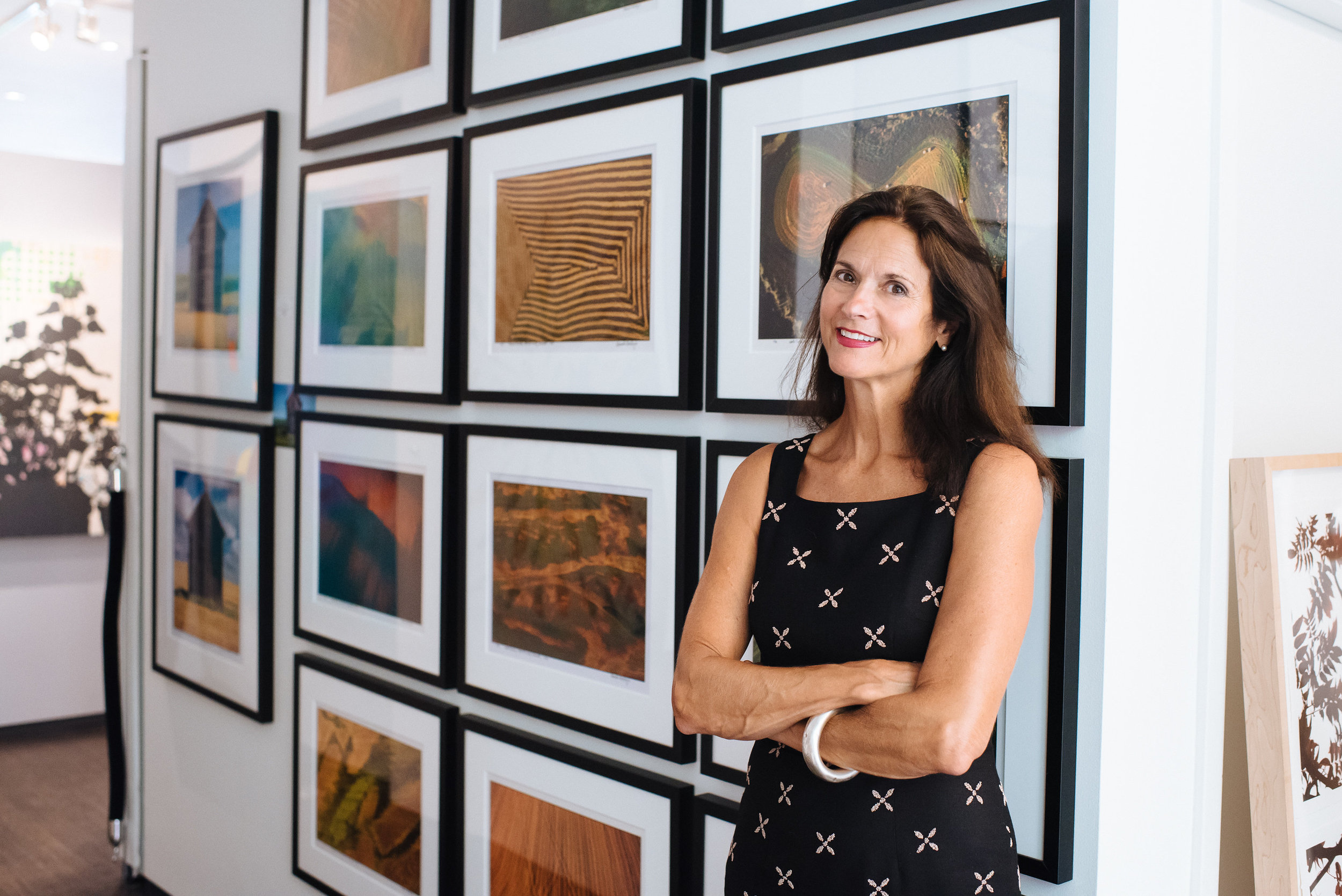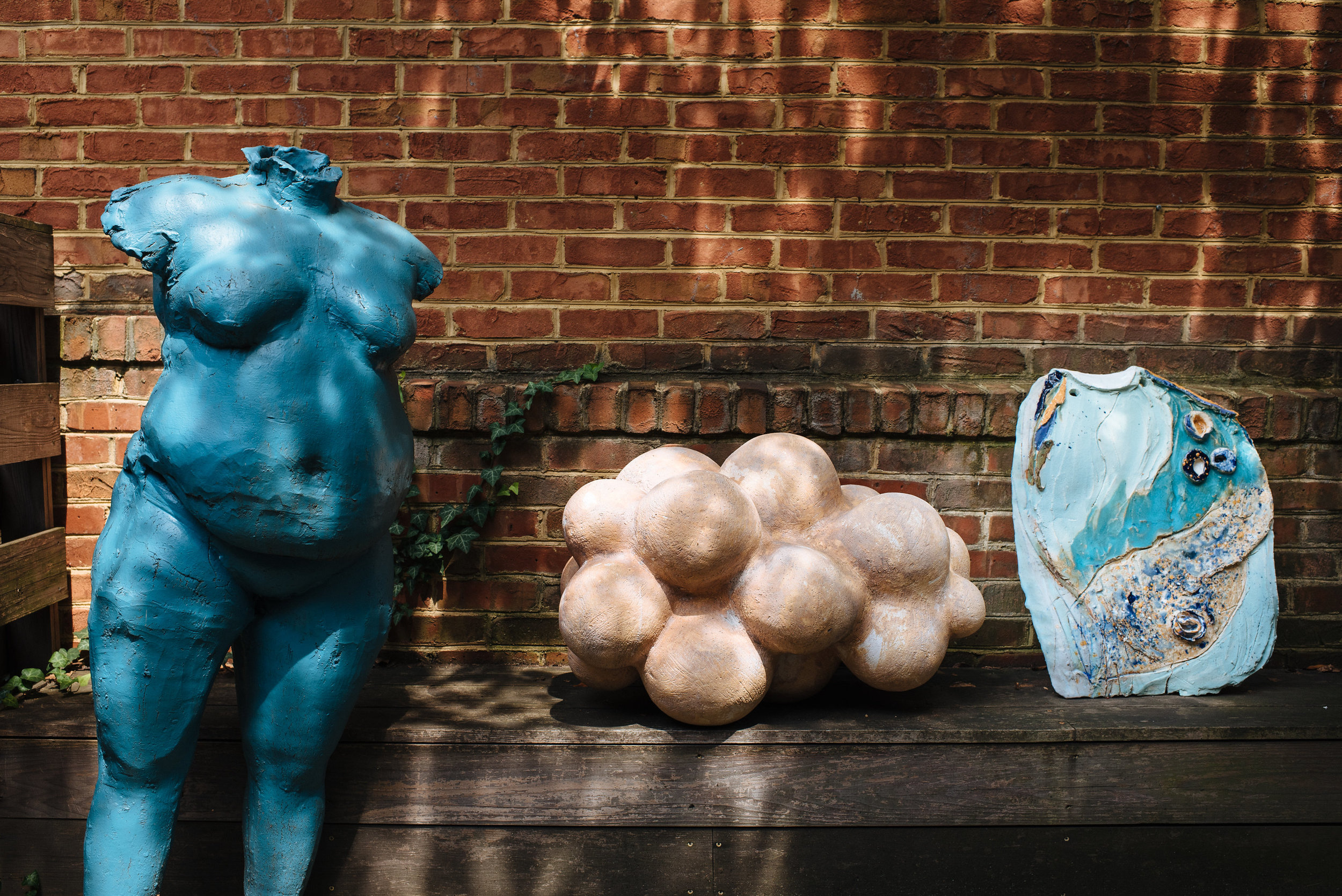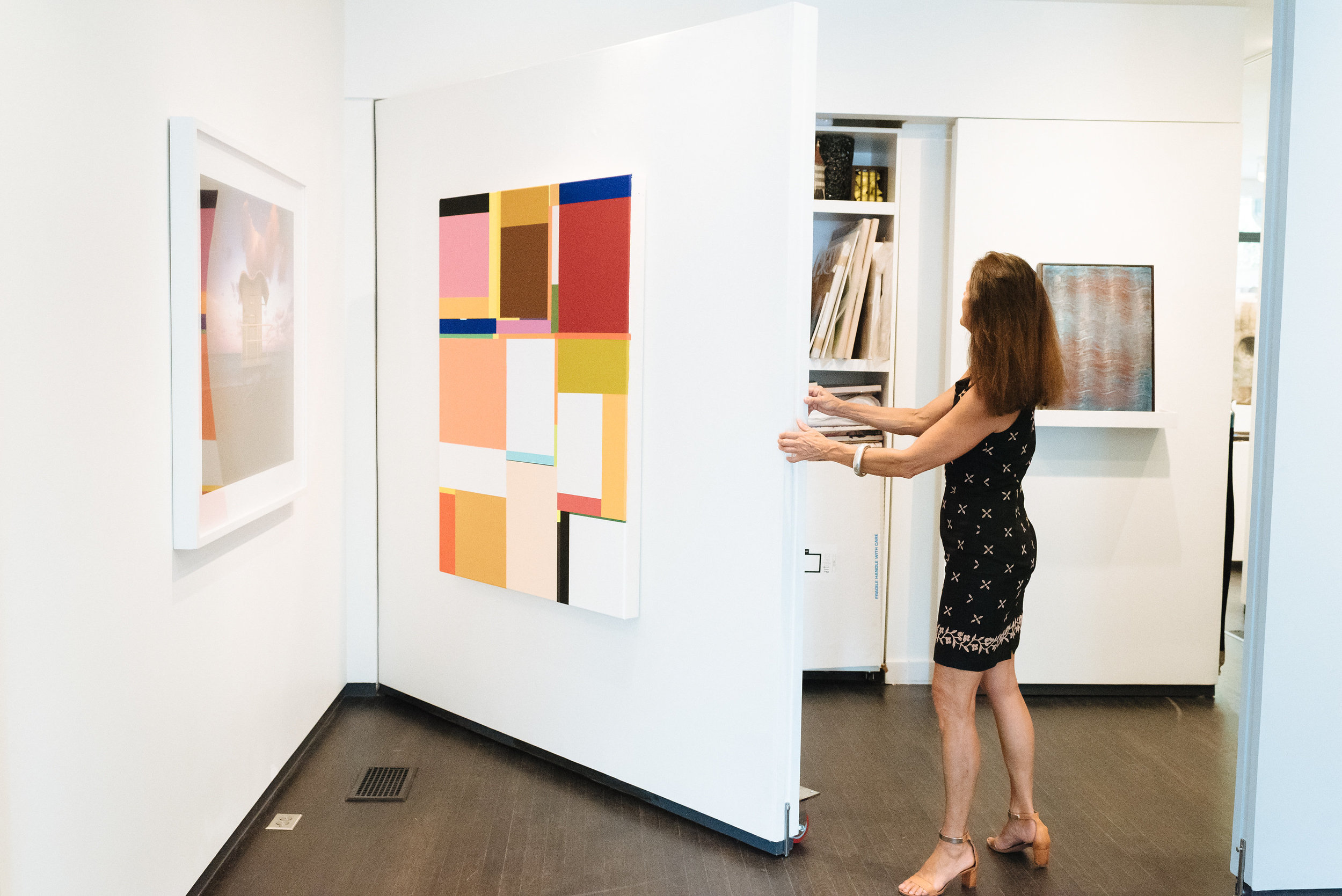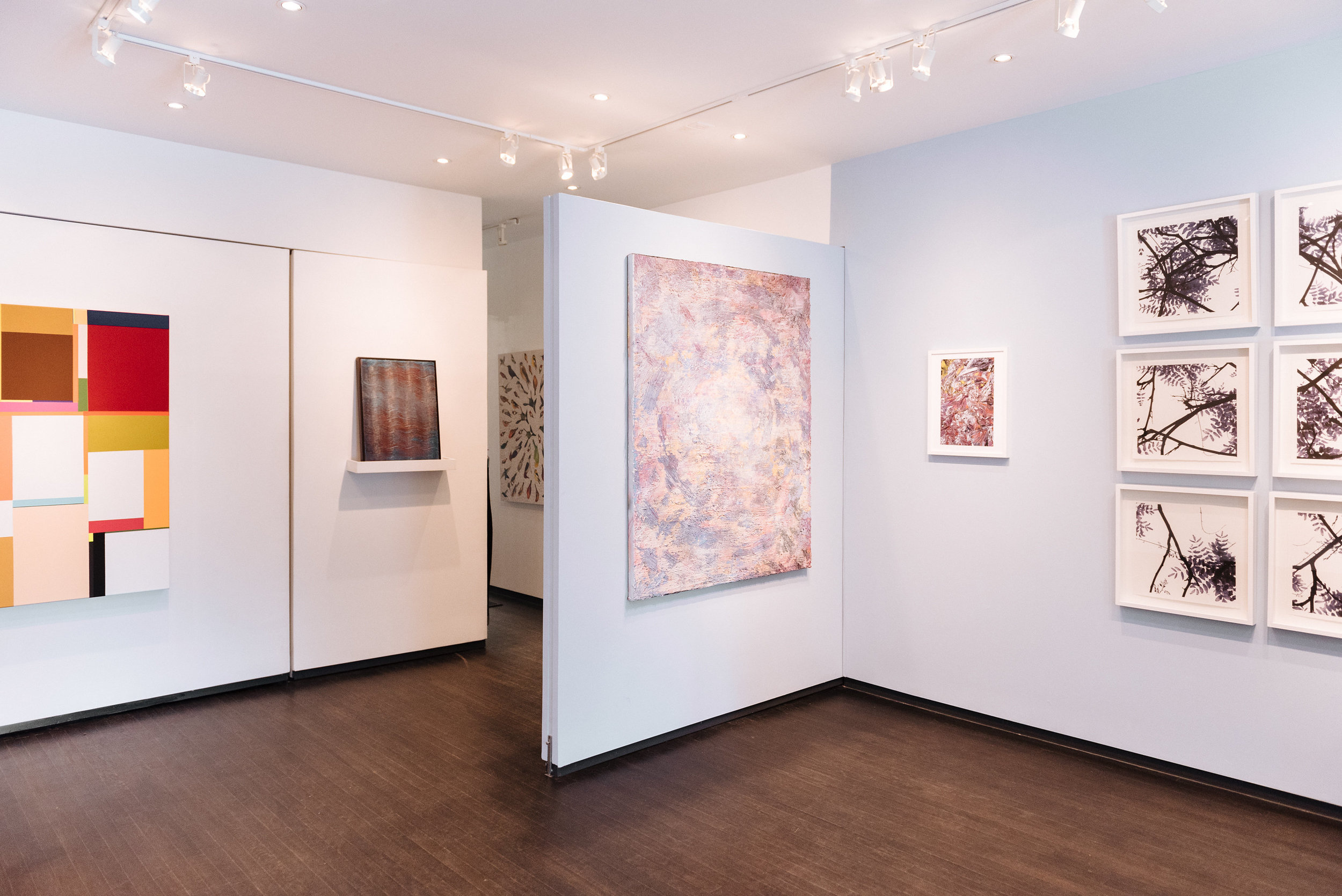‘I Already Did Edgy When I Was Young’
On his deathbed, Rebecca Cross’ father had an unusual request. He wanted her to make him an urn.
‘My father was an architect but he’d started taking ceramics classes, and he made an urn for my mother when she died,’ says Rebecca, the owner of Cross MacKenzie Gallery in Book Hill.
Rebecca put her own art on hold for a decade to run the gallery, but the death of both parents last year forced her to start thinking about—well, death. She began drawing again, creating a series of abstracted, ancient weapons from around the world that signify objects as agents of death.
On September 8, her drawings will be featured in a new exhibition called Termini—a conversation on death, both symbolic and physical. Rob Barnard and British artist Julian Stair’s powerful cinerary jars will also be on display, one of which Rebecca says she’ll likely purchase for her father.
‘I think they’re architectural enough that he’d approve. I’ll make his urn symbolically by bringing them together.’
Rebecca’s life and art have always been one in the same. Growing up in Virginia, she took classes at the Art League in Old Town Alexandria and lived in the mid-century modernist community of Hollin Hills—a neighborhood her father helped design.
‘My Dad really shaped my views. I was steeped in his aesthetic,’ says Rebecca, whose own husband, Max, is an architectural photographer. ‘My parents took my art very seriously because aesthetics, art and design were their business, too. It was never thought to be a waste of time or frivolous.’
As a child, Rebecca frequently redecorated and painted her bedroom—going so far as to paper mache the doorknobs. In high school, she made furniture out of old broom sticks, and had a printmaking internship at the National Collection of Fine Arts, followed by a summer serving as the assistant to a jeweler in the Virgin Islands. She painted, she sculpted, she combed a Husky so she could spin the hair for weaving.
‘I just had so much exposure to art. I was lucky.’
After graduating from Bennington College, Rebecca got her MFA in painting at the Royal College of Art in London. She lived there for six years, renovating a warehouse in an artist’s community on the Thames and working for sculptor Sir Anthony Caro.
For years, Rebecca painted and made ceramics—showing and selling her work everywhere from Georgetown’s Addison/Ripley to Barney’s New York and Japan. She also designed the sets and costumes for Bresee Dance Company in Norway, whose production of Unstill Lives was performed at the Kennedy Center, and for Tony Williams’ BalletRox production of The Urban Nutcracker--still running in Boston after 17 Christmas seasons.
In addition to her own career, Rebecca acted as an agent for her husband, Max, whom she’d met at 18.
‘I worked on getting him shows and grants, and in the magazines. We were a partnership. I’d been dealing with his galleries and my galleries for years, and opening our own just seemed like something that we could do. It seemed like a new chapter.’
In 2006, Rebecca opened Cross MacKenzie Gallery in Canal Square. Her initial focus was on ceramics, but it was too narrow a niche. She expanded her gallery and moved to a space in Dupont Circle.
Three years ago, Margaret Heiner was moving her Book Hill gallery to Connecticut and the space became available. Rebecca and Max jumped at the chance, partnering with her sister and brother-in-law to purchase the building.
As one of six galleries that comprise the Georgetown Galleries on Book Hill collective, Cross MacKenzie now features emerging and mid-career artists with high-quality, (mostly) one-of-a-kind artwork.
‘They aren’t big names but they all went to art school and are extremely talented,’ Rebecca says. ‘I know many of them through being an artist myself for so many years. One artist will lead me to another artist.’
Pieces range from Rebecca’s own ceramics to her husband’s photography and others’ paintings.
‘I like showing ceramics with the paintings that would be above them, like when you actually live with your art. I really enjoy curating the collections together and hanging a two-dimensional thing behind a three-dimensional thing. They set each other off.’
Rebecca’s customers range from passersby who fall in love with a piece in her window, to collectors, architects, and interior designers. Although most skew older, Rebecca makes a conscious effort to showcase a few smaller, more affordable pieces that are more attainable for young professionals.
‘I love sharing the art and talking to everyone who comes in,’ she says. ‘I really enjoy the shopkeeper aspect of running the gallery. I love planting my flowers out front, getting my coffee and croissants from Patisserie Poupon. I already did edgy when I was young, living in a marginal community in London with a bunch of first-wave artists. We loved it, but it was dangerous. There were murders on the street! Now I’m this age, and it’s lovely to be part of such a nice community.’
While Georgetown serves as Rebecca’s daytime base, her family recently purchased a home in Hillsboro, Virginia, that was built in 1789. They’re no strangers to such lofty projects, having already renovated a schoolhouse in Minnesota that Max had photographed for years. They purchased the property 15 years ago, moved it nine miles, and knocked out the fourth wall to accommodate floor-to-ceiling windows. Over 500 of Rebecca’s hand-painted tiles adorn the home, each an homage to their life in the country.
‘Our life and everything we do—every project—are woven together,’ says Rebecca, whose sons are also in the arts—one as a filmmaker in LA, the other a painting student in New York. ‘I’ve had all of these stages in my life. My life as a painter, my life as a mother, my life as a gallery owner. This next chapter is my life in the country. I’m trying to put those last two chapters together.’
As Rebecca prepares for her upcoming Termini show—a reflection on the final chapter in every life—she says her weapons series has sparked her imagination.
She already has an idea of what she wants to do next.
